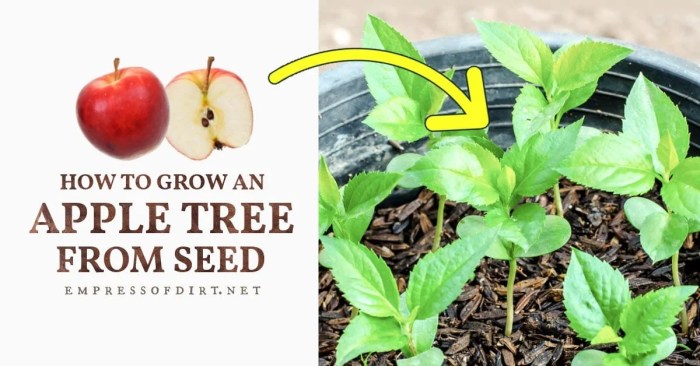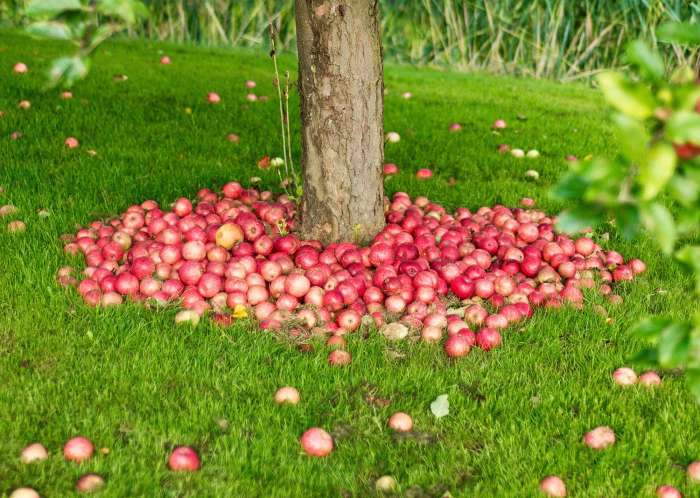Planting an Apple Tree

Can you plant one apple tree – Planting an apple tree successfully hinges on careful site selection. Choosing the right location and preparing the soil appropriately are crucial steps that will significantly impact the tree’s health, growth, and fruit production. Ignoring these foundational aspects can lead to stunted growth, reduced yields, and even tree failure.
Location and Soil Considerations for Apple Trees
The ideal location and soil conditions are vital for a thriving apple tree. Apple trees require specific conditions to flourish, and understanding these needs is key to successful cultivation. Let’s explore the crucial aspects of soil type, sunlight exposure, and wind protection.
Yes, you can certainly plant a single apple tree; it’s a straightforward process. However, if you’re interested in a more challenging project with a different species, you might consider learning how to plant oak tree seeds, for which you can find a helpful guide here: how to plant oak tree seeds. Planting an apple tree, though, offers a quicker path to enjoying homegrown fruit.
Soil Requirements for Apple Trees
Apple trees thrive in well-drained, fertile soil. The ideal soil pH is slightly acidic, ranging from 6.0 to 6. Poor drainage can lead to root rot, while soil that is too alkaline can hinder nutrient uptake. The following table compares different soil types and their suitability for apple tree cultivation:
| Soil Type | pH Range | Drainage | Suitability for Apple Trees |
|---|---|---|---|
| Sandy Loam | 6.0 – 7.0 | Excellent | Good, with potential need for added organic matter |
| Silty Loam | 5.5 – 7.5 | Good | Good, generally suitable |
| Clay Loam | 5.0 – 6.5 | Poor to Moderate | Fair, requires significant amendment to improve drainage |
| Clay | 4.5 – 8.0 | Poor | Poor, unsuitable unless heavily amended |
Amending heavy clay soils with organic matter like compost significantly improves drainage and aeration, making them more suitable for apple trees. Conversely, sandy soils, while well-draining, may require the addition of organic matter to improve water retention and nutrient availability.
Sunlight Requirements for Apple Trees
Apple trees require at least 6-8 hours of direct sunlight daily for optimal growth and fruit production. Insufficient sunlight can lead to weak growth, reduced flowering, and a lower fruit yield. A south-facing slope, particularly in northern climates, often provides the best sunlight exposure. Conversely, locations shaded by buildings, large trees, or other obstructions are unsuitable. For example, planting an apple tree in the dense shade of a large oak tree would likely result in poor growth and minimal fruit.
Conversely, a sunny location in a south-facing garden would provide ideal conditions.
Wind Protection for Apple Trees, Can you plant one apple tree
Strong winds can damage apple trees, causing broken branches, reduced fruit set, and increased susceptibility to disease. Selecting a planting site sheltered from prevailing winds is crucial. Natural windbreaks, such as existing hedges or rows of trees, can provide excellent protection. If natural windbreaks are unavailable, consider planting windbreaks strategically around the apple tree. Strategically placed barriers, such as fences or strategically planted shrubs, can also effectively mitigate wind damage.
In exposed locations, staking the young tree can provide additional support against strong winds until it establishes a robust root system.
Illustrative Examples

Understanding the visual characteristics of apple trees, both healthy and unhealthy, is crucial for proper care and maintenance. Observing these characteristics allows for early detection of problems and ensures a bountiful harvest. The following examples illustrate key visual features of apple trees at different stages and under varying conditions.
Mature Apple Tree Description
A mature apple tree, depending on the cultivar and growing conditions, can reach heights of 20 to 40 feet and a similar spread. Its shape is often vase-shaped or broadly rounded, with a central leader trunk from which numerous primary branches radiate. These branches, in turn, subdivide into smaller secondary and tertiary branches, creating a complex network supporting the leaves and fruit.
The bark of a mature apple tree is typically rough and furrowed, ranging in color from dark brown to grayish-brown. Young bark may be smoother and reddish-brown. The leaves are generally oval-shaped with serrated edges, ranging in size from 2 to 5 inches in length. They are typically dark green on the upper surface and lighter green on the underside.
The leaves are alternately arranged along the branches.
Healthy and Unhealthy Apple Leaves
Healthy apple leaves are a vibrant, consistent dark green color, firm to the touch, and free of blemishes or discoloration. They exhibit a natural sheen and are uniformly sized and shaped for their variety. In contrast, unhealthy leaves may exhibit various symptoms depending on the underlying issue. Leaves affected by diseases like apple scab will show dark brown or black lesions, often circular or irregular in shape.
Powdery mildew will present as a white or gray powdery coating on the leaf surfaces. Pest infestations, such as aphids or spider mites, may cause yellowing, curling, or stippling of the leaves. Severe infestations can lead to leaf drop. Nutrient deficiencies can also affect leaf color, resulting in yellowing, chlorosis, or browning. For example, a nitrogen deficiency can lead to pale green or yellow leaves, while iron deficiency results in yellowing between the leaf veins.
Properly Pruned versus Unpruned Apple Tree
A properly pruned apple tree displays a well-defined structure with a central leader and evenly spaced, strong branches. The branches are not overcrowded, allowing for good air circulation and sunlight penetration throughout the canopy. The overall shape is balanced and symmetrical, facilitating easy access for harvesting and pest management. In contrast, an unpruned apple tree appears chaotic and overgrown.
Branches may be crowded, crossing each other, or growing at awkward angles. This leads to weak branches, reduced fruit production, and increased susceptibility to diseases and pests. The tree’s overall shape is irregular and unbalanced, making maintenance and harvesting difficult. The lack of sunlight penetration to the interior of the tree can result in fewer, smaller fruits.
Top FAQs: Can You Plant One Apple Tree
What is the best time of year to plant an apple tree?
The ideal time is typically during the dormant season, either in late autumn or early spring, before new growth begins.
How far apart should I plant multiple apple trees?
Spacing depends on the tree’s mature size. Check the variety’s description for recommended spacing, but generally, allow ample room for growth, often 15-25 feet.
Do apple trees need pollination?
Most apple trees require cross-pollination from another compatible variety. Check your variety’s description to see if it’s self-fertile or needs a pollinator.
What are the signs of an unhealthy apple tree?
Signs include wilting leaves, yellowing leaves, unusual spots or discoloration on leaves or fruit, dieback of branches, and insect infestations.
